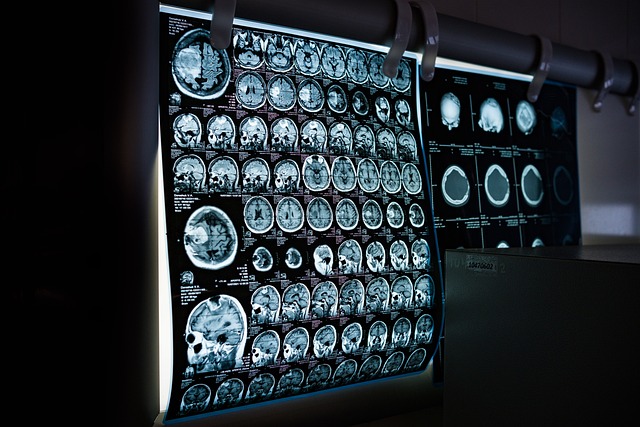Cryolipolysis: Sculpting Bodies with Cold
In a world obsessed with body image and quick fixes, a revolutionary fat-reduction technique has emerged, promising to freeze away stubborn fat cells without invasive surgery. Cryolipolysis, also known as "fat freezing," has captivated the beauty and fitness industry with its innovative approach to body contouring. This non-invasive procedure harnesses the power of controlled cooling to target and eliminate fat cells, offering a tantalizing alternative to traditional liposuction. As the demand for non-surgical body sculpting methods continues to rise, cryolipolysis has positioned itself at the forefront of a new era in aesthetic treatments, blending cutting-edge science with the ever-present desire for physical perfection.

The procedure typically involves using a device that suctions the targeted area between two cooling panels. The temperature is then lowered to a point where fat cells begin to crystallize and die, while the skin and other tissues remain unharmed. This selective destruction of fat cells is what sets cryolipolysis apart from other fat reduction methods.
From Popsicles to Patented Technology
The concept of cryolipolysis was born from an unexpected observation. Researchers at Harvard University and Massachusetts General Hospital noticed that children who frequently consumed popsicles developed dimples in their cheeks. This phenomenon, dubbed “popsicle panniculitis,” sparked the idea that cold could selectively affect fat cells.
Dr. Dieter Manstein and Dr. R. Rox Anderson took this concept and developed it into a patented technology. In 2010, the FDA cleared the first cryolipolysis device, CoolSculpting, for use in the United States. Since then, the technology has evolved, with newer devices offering faster treatment times and the ability to target multiple areas simultaneously.
The Treatment Experience
A typical cryolipolysis session lasts between 35 to 60 minutes, depending on the area being treated. Patients often report feeling intense cold initially, followed by numbness as the area becomes desensitized. Many find the procedure comfortable enough to read, work on a laptop, or even nap during treatment.
Post-treatment, the area may appear red and feel slightly sore, similar to the sensation after an intense workout. Some patients experience temporary numbness, tingling, or bruising, but these effects typically subside within a few days to weeks.
Results and Expectations
One of the most appealing aspects of cryolipolysis is its gradual, natural-looking results. As the body processes and eliminates the destroyed fat cells over time, patients typically see noticeable changes within 2 to 4 months after treatment. Studies have shown an average fat reduction of 20-25% in the treated area after a single session.
It’s important to note that cryolipolysis is not a weight loss solution, but rather a body contouring method. Ideal candidates are those who are near their target weight but struggle with stubborn fat pockets resistant to diet and exercise.
Market Impact and Industry Trends
The global market for non-invasive fat reduction procedures has exploded in recent years, with cryolipolysis leading the charge. According to market research, the cryolipolysis segment is expected to grow at a compound annual growth rate of over 15% from 2021 to 2028.
This growth is driven by several factors, including increasing consumer awareness, technological advancements, and a growing preference for non-surgical aesthetic treatments. The pandemic has also played a role, with many people seeking ways to address the “Quarantine 15” weight gain without resorting to surgery.
Combining Cryolipolysis with Other Treatments
As the aesthetic industry evolves, practitioners are finding innovative ways to enhance the results of cryolipolysis by combining it with other treatments. One emerging trend is the pairing of cryolipolysis with radiofrequency or ultrasound therapies to address both fat reduction and skin tightening simultaneously.
Some clinics are also exploring the use of cryolipolysis in conjunction with muscle-stimulating technologies like electromagnetic muscle stimulation (EMS). This combination aims to not only reduce fat but also build and tone muscle, offering a more comprehensive body sculpting solution.
The Future of Fat Freezing
As cryolipolysis technology continues to advance, we can expect to see improvements in treatment efficiency, patient comfort, and results. Some areas of ongoing research and development include:
-
Improved applicator designs to treat a wider range of body areas more effectively
-
Enhanced cooling algorithms to optimize fat reduction while minimizing side effects
-
Integration of artificial intelligence to personalize treatment plans based on individual patient characteristics
-
Development of at-home cryolipolysis devices for maintenance treatments
Addressing Concerns and Limitations
While cryolipolysis has gained widespread popularity, it’s not without its critics and limitations. Some concerns include:
-
Paradoxical Adipose Hyperplasia (PAH): A rare side effect where the treated area expands rather than shrinks
-
Variability in results: Not all patients respond equally to treatment
-
Cost: Multiple sessions may be required, making it a significant investment
-
Limited efficacy for significant weight loss or addressing obesity
As with any aesthetic procedure, it’s crucial for patients to have realistic expectations and to consult with a qualified practitioner to determine if cryolipolysis is appropriate for their individual needs and goals.
Ethical Considerations in the Pursuit of Perfection
As cryolipolysis and similar body contouring technologies become more accessible, they raise important questions about body image, self-esteem, and the societal pressure to achieve physical perfection. While these treatments can boost confidence and help individuals feel more comfortable in their own skin, there’s a fine line between self-improvement and perpetuating unrealistic beauty standards.
Responsible practitioners and industry leaders are increasingly emphasizing the importance of a holistic approach to health and wellness, promoting cryolipolysis as part of a broader commitment to a healthy lifestyle rather than a quick fix or substitute for proper nutrition and exercise.
In conclusion, cryolipolysis represents a fascinating intersection of science, technology, and beauty. As it continues to evolve and shape the landscape of non-invasive body contouring, it offers both exciting possibilities and important considerations for those seeking to sculpt their bodies through the power of cold.





